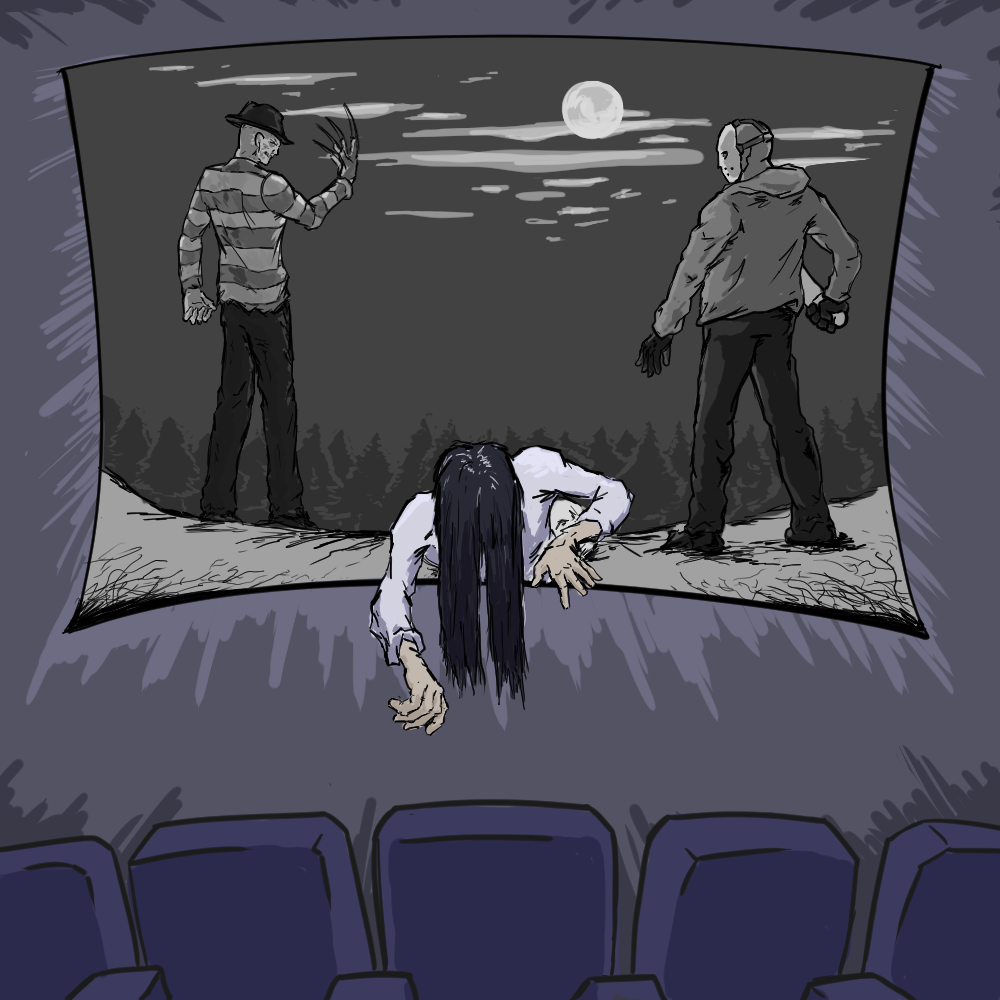Please visit response.fsu.edu for official FSU updates and resources.
What Makes a Movie Scary?

Prologue
One movie night, my friends and I were looking for a good scare, so we sat on the couch, cued up The Ring, and hit the lights. During the phone call scenes, I was confused to see my peers tense and unsettled. Does nothing scare me or is horror subjective? It’s likely the latter, considering I have experienced similar sensations while watching many movies. For instance, to exercise my right as a seventeen-year-old to see rated-R movies on my own, I saw Us in a theater and immediately regretted my decision. The movie was good; it just took a week for the nightmares to wear off. Why was I scared of evil doppelgangers but unaffected by a girl who crawls out of your television to kill you? As an avid filmgoer and aspiring filmmaker, I made it my goal to break down the elements of what makes a movie scary.
Relatability
I asked each of my family members to name the scariest movie they have ever seen. Most of their answers revealed their subconscious fears from childhood. My parents were afraid of Friday the 13th and Nightmare on Elm Street because summer camp and suburban neighborhoods were very familiar settings to them. The fear that they could be the target of a vengeful serial killer kept them up at night. Despite these worries seeming irrational in hindsight, when you’re a kid, you’ll believe just about anything. In fact, the story of the Bogeyman was used by adults to frighten children into good behavior. Stephen King novels manage to be scary to people of all ages. The film adaptation of his novel, Misery, is a perfect example of how horror stories exploit our subconscious fears. While audiences know that doctors are professionals, we also fear that they could do anything to us because we are in such a vulnerable position around them. The film also puts the main character in an isolated location where they are unsure of their chances for survival.
Believability
The reason The Blair Witch Project was so successful was due to people believing the footage was real and not realizing that the filmmakers used a found footage aesthetic to stay on a low budget. This doesn’t mean that every horror movie has to be realistic; it’s just better if the characters react reasonably to a situation. If the characters aren’t afraid, why should the audience be? Horror movies used to show characters who were oblivious to their surroundings and always checked out the weird noise coming from the basement. These occurrences disconnect the audience from what they see on screen and cause them to yell at their television. Thankfully, characters are starting to make smarter decisions.
Quantity
Zombie movies don’t scare audiences as they did in the ‘60s due to oversaturation. In 1968, with the initial release of Night of the Living Dead, people feared that corpses would come back from the afterlife and infect everyone by biting them. Now, zombies are a landmark of pop culture and have spawned numerous franchises and even zombie survival kits. Studios have taken notice of this shift and since marketed new zombie releases as action thrillers, comedies, or parodies that make fun of zombies. Most other public domain monsters also fail to draw moviegoers because they are no longer exciting. The reason The Invisible Man’s recent remake was such a success has to do with the fact that this generation is unfamiliar with the previous lore of the franchise. The Invisible Man is good but if there was a new one made every year, it would lose its effect over time. Fresh perspectives in horror keep the genre alive.
Craftsmanship
At the end of the day, the effectiveness of horror boils down to how well-crafted the movie is. Every crew member has a hand in creating the eerie atmosphere of each scene. The editor controls rhythm and pacing, the director maneuvers characters and perspective, the composer produces a spine-chilling theme, the set designer builds the landscape, and the writer creates the world the characters inhabit. One example of a technical element that can make or break a movie
is the jump scare. Jump scares can be fruitful in small doses throughout a movie. They are intended to catch the audience off guard and raise their blood pressure for a few fleeting seconds. However, in excess, jump scares are a crutch, used to compensate for the lack of creativity on a film set.
Because horror is subjective, the genre has different conventions all over the world. While Hollywood horror tends to rely on things like jump scares, in contrast, Asian horror movies are more concerned with building up tension exponentially. If you would like to make the comparison yourself, on October 14, the Askew Student Life Center is playing Ringu, the Japanese horror film that spawned the American remake, The Ring.
Written by: Dylan Fishman
Art by: Yanni Spanolios | Instagram



